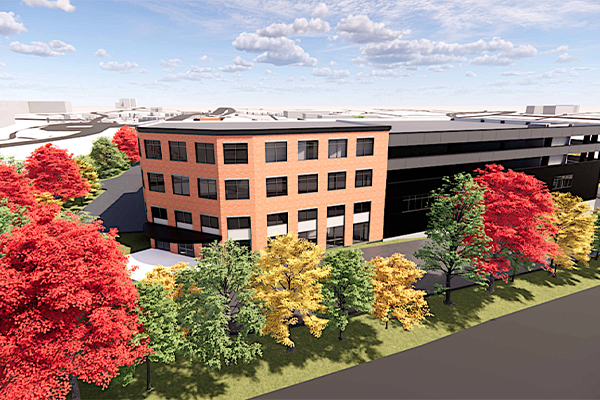
Editor”™s note: The sciences and the arts may seem antithetical to some ”“ stimulating as they do different areas of the brain, said Danilo Silva, M.D., director of neurosurgery at Phelps Hospital in Sleepy Hollow. (See story below.) But despite this ”“ or maybe because of it ”“ they can complement one another, helping doctors to stay calm and focused, relax or explore a different part of themselves. At a Sept. 29 reception for the 60th anniversary of the Armonk Outdoor Art Show, Armonk artist Liz Green unveiled “Continuum of Spirit,” a white halo of butterflies made of the sheet music for the playlist ”“ Bruce Springsteen, The Who, Iron Maiden ”“ that Silva and colleague David Gordon, M.D., regional chair of neurosurgery for Northwell Health Westchester, listened to as they performed surgery on a patient with a brain hemorrhage.
Their colleague Gizelka David-West, M.D., a gynecological oncologist at Phelps and Northern Westchester Hospital in Mount Kisco (Page 12), not only listens to music in the operating room; she makes music as the female lead singer of a rock ”™n”™ roll band of doctors, N.E.D. (No Evidence of Disease):
For Danilo Silva, M.D., neurosurgery is as much an art as a science.
“Understanding the art of medicine means knowing when to recommend neurosurgery and when surgery need not be done,” said Silva, part of the neurosurgical team at Northwell Health Westchester, which includes Phelps Hospital in Sleepy Hollow, where he is director of neurosurgery, and Northern Westchester Hospital in Mount Kisco. “We only recommend surgery when we can make the patient better. ”˜First, do no harm,”™” he added, quoting part of the Hippocratic Oath. “I learned in my youth that treatment depends on the clinical status of the situation.”
For example, he said, spinal surgery to alleviate back pain might only produce more pain.

As a neurosurgeon, Silva specializes in less invasive endoscopic, endonasal scull-based surgical procedures (through the nose), which are designed to result in less tissue damage and less downtime for the patient. His practice also embraces targeted radiosurgical techniques, traditional open-brain surgical procedures and all cerebral vascular problems such as aneurisms and strokes.
Though brain cancer gets big play in the news when a Sen. John McCain or a Beau Biden is diagnosed with it, it is actually one of the less common forms of the disease, Silva said, noting that around 25,000 malignant brain and spinal tumors have been diagnosed this year. It is, however, one of the most debilitating and deadliest forms of cancer ”“ albeit one that has seen a growth in new techniques to combat it.
Because it is a particularly fearsome diagnosis, its treatment requires a great deal of sensitivity on the neurosurgeon”™s part, out of the operating room as well as in it.
“I think it”™s very important to communicate with patients and in different languages as we have a diverse community,” said Silva, who is also fluent in Portuguese and Spanish.
The Portuguese comes naturally to him as he was born and raised in Recife, a city in northeast Brazil that he said is similar to Miami. There he dreamed of two things ”“ being a doctor and a basketball player. His hoop dreams were denied, he said with modest humor, by his being height-challenged, at least relative to basketball stars, though his love of the game led him to become a Michael Jordan/Chicago Bulls fan. (He has transferred that devotion to the New York Knicks.)
The medical dream seemed more reasonable to this son of doctors, who earned his M.D. at Federal University of Pernambuco and did his residency in neurosurgery at the Hospital da Restauração, University of Pernambuco, both in Recife.
Silva came to the United States in February 2011 to do six years of post-residency training in fellowships at Weill Cornell Medical College in Manhattan, the Cleveland Clinic and Brigham and Women”™s Hospital, a teaching affiliate of Harvard Medical School in Boston. All that time in the OR enhanced a love affair with music.
“It”™s one of the things that helps me to relax,” he says. “I like jazz, ”™80s pop-rock styles of music. It keeps me calm, focused”¦.”
He”™s passing his love of music on to the two children he shares with wife Fabiana Silva, M.D., an ophthalmologist who is a research scientist at Regeneron in Tarrytown. In their Bronxville home, Lucas, 10, plays the saxophone, while Clarice, 5, is studying the flute ”“ though she”™d like to emulate her big brother and pick up the sax.
Silva himself doesn”™t play an instrument. “But if I could go back and learn one,” he said, “I would.”






















